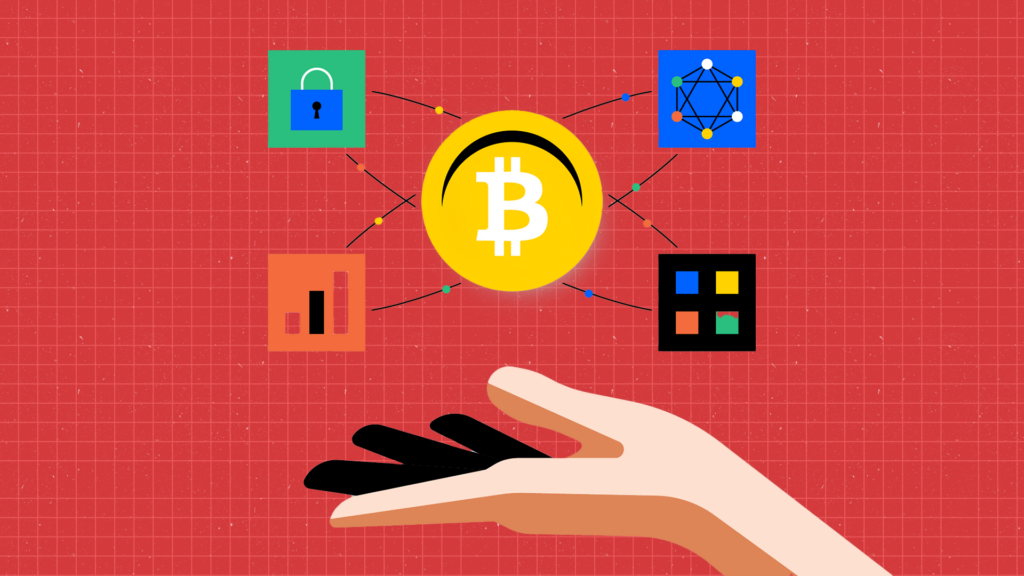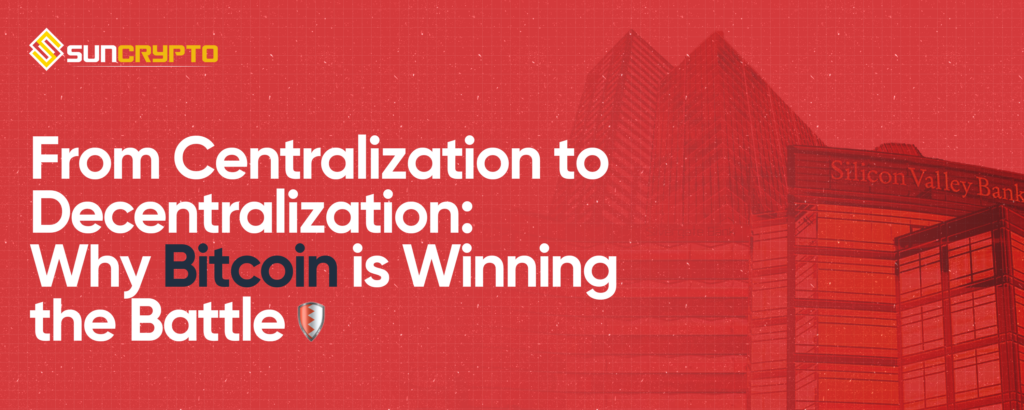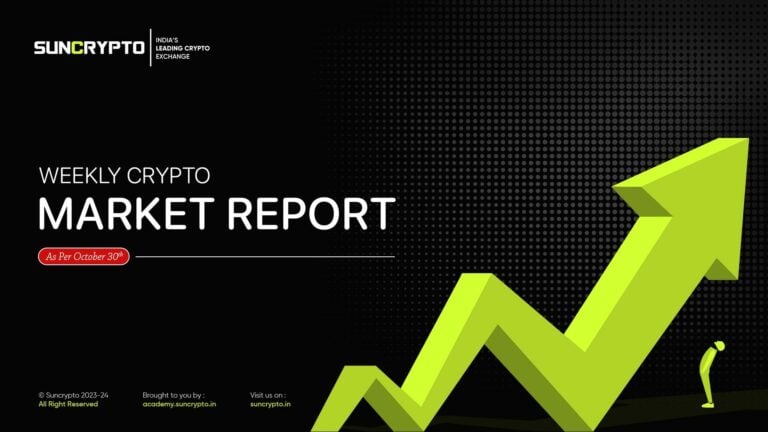The battle between centralized and decentralized systems has been raging for centuries. With power struggles between governments and individuals at the core of this conflict. Today, this battle is playing out in the realm of finance, with Bitcoin emerging as a formidable challenger to traditional financial institutions, from Centralization to Decentralization.
The rise of Bitcoin is a fascinating story that speaks to the desire for greater transparency, autonomy, and security in our financial systems. By creating a decentralized, peer-to-peer network that is resistant to censorship and government control, Bitcoin has captured the imagination of people around the world who are looking for a better way to manage their assets.
In this blog, we’ll explore why recent incidents prompted people to shift their focus from centralized to decentralized systems. Apart from that, we’ll also look at what this means for the future of our financial world.
Centralization to Decentralization: Why Major Centralized Institutions like banks are Losing Ground?
One of the key reasons why Bitcoin is winning the battle against centralized institutions is because those institutions have failed to adequately manage people’s assets. The recent market updates show that two major US financial institutions, Silicon Valley Bank and Signature Bank, collapses in the last three days.
The reason behind the failures could be a deeper issue, highlighting faults in the American banking system. This basically centered on record inflation, questionable balance sheets, and rising rates.
To that end, Martin Gruenberg, the chief executive officer of the Federal Deposit Insurance Corporation (FDIC), warned last week about a $620 billion risk lurking in the US financial system. And by Sunday, a significant confrontation between three banks had occurred, with Silvergate Capital Corp being the third to fail.

Industry experts believe that a bank suffers interest rate risk when interest rates rise rapidly in a short period of time. This is exactly what is happening in the United States, where the Federal Reserve has been aggressively raising interest rates since March 2022.
So far, the Fed has raised interest rates by 4.5 percent in an effort to contain inflation. As a result, interest rates have risen proportionately. This even raises the question of whether regulators’ measures are effective enough to protect banks and customers.
These circumstances makes the situation even worse, resulting in the failure of three major US financial institutions.
Looming Financial Storm: Why the Banking Crisis is Far From Over
All banks suffer interest rate risk on some of their holdings today because of the Fed’s rate-hiking strategy.
The US government’s decision to backstop all deposits of SVB and Signature Bank, regardless of size, could reduce the likelihood that banks with less cash and more securities on their books will face a liquidity constraint as a result of significant withdrawals triggered by a sudden panic. However, the current US bank data reveal that over $1 trillion in bank deposits are currently uninsured, raising concerns that the US banking crisis is not yet ended.
Part of the problem is that centralized institutions have too much power and control. This has eroded public trust in these institutions. And has led many people to look for alternatives, from Centralization to Decentralization.
Unlocking the Potential: How Bitcoin Holds the Key to Solving This Major Problem
Bitcoin, on the other hand, is a decentralized system that is not controlled by any one entity or institution. It operates on a P2P network, which means that transactions are processed and verified by a network of users rather than by a central authority.

This makes Bitcoin more secure and transparent than traditional financial systems. It also gives people more control over their own assets. Since they don’t have to rely on a centralized institution to manage their money for them.
Another key advantage of Bitcoin is its resistance to censorship and government control. Because it operates on a decentralized network, it is much harder for governments to regulate or shut down Bitcoin. This makes it an attractive option for people who are worried about government overreach or censorship.
Apart from that, the recent surge in the price of Bitcoin also indicates that people are shifting their focus from centralized to decentralized networks. As a result, the asset witnessed a price increase of more than 28% in the last 7 days. In addition, at the time of writing, BTC’s price was trading at a price range of $25,805.
Is Bitcoin the Grim Reaper of Central Banks’ Reign?
The argument for Bitcoin as an alternative to central banks is supported by both economics and technology. Bitcoin’s creator, Satoshi Nakamoto, described the cryptocurrency as a “P2P version of electronic cash.” This enables “online payments to be made directly from one party to another without passing through a financial institution.”
In the light of a financial infrastructure system dominated by central banks, Bitcoin addresses three concerns:
First and foremost, it prevents the risk of double-spending. Each bitcoin is one-of-a-kind and cryptographically secure, which means it cannot be hacked or copied. As a result, you cannot spend or counterfeit bitcoin twice.
Second, while being decentralized, Bitcoin’s network is still a reliable system. In this case, trust is a concept that is derived from an algorithm. To be included in the Bitcoin network’s ledger, transactions must be approved by nodes located all over the world. Even a single disagreement by a node can prevent a transaction from being included in Bitcoin’s ledger.
Third, the Bitcoin network eliminates the need for a centralized infrastructure by expediting the production and distribution of the currency. Everyone with a full node can generate bitcoin from their own computers. As a result, a network of banks chartered by a central body isn’t required to distribute cryptocurrency.
This indicates that Bitcoin has the potential to eliminate the need for centralized systems in the times to come. But, is it possible for both of these systems to work together?
A Match Made in Heaven? The Potential Integration of Centralized & Decentralized Systems
While Bitcoin is clearly gaining ground on centralized institutions, it’s important to remember that there is still a place for both types of systems in our financial world. As we know that there are many things that centralized institutions do well. And some of them include providing loans and other financial services to people who might not have access to them otherwise.
However, we may see more integration between these two systems in the future. For example, we may see traditional financial institutions start to incorporate Bitcoin into their offerings. Or we may see new companies emerge that combine the strengths of both centralized and decentralized systems.
Conclusion
The rise of Bitcoin and other decentralized cryptocurrencies marks a significant shift in the financial landscape. The flaws of traditional financial institutions have become increasingly apparent, and people are turning towards decentralized cryptocurrencies as a viable alternative. With faster, more affordable, and more transparent transactions, Bitcoin is winning the battle against centralized institutions.
While the future of the financial system is uncertain, it’s clear that change is on the horizon. The integration of decentralized and centralized institutions could bring about a new era of financial services that are faster, more secure, and more transparent than ever before. As the financial landscape continues to evolve, it’s important for us to stay informed and adapt to the changing times.
To know more about why people are shifting their focus from Centralization to Decentralization, go check out SunCrypto Academy.





